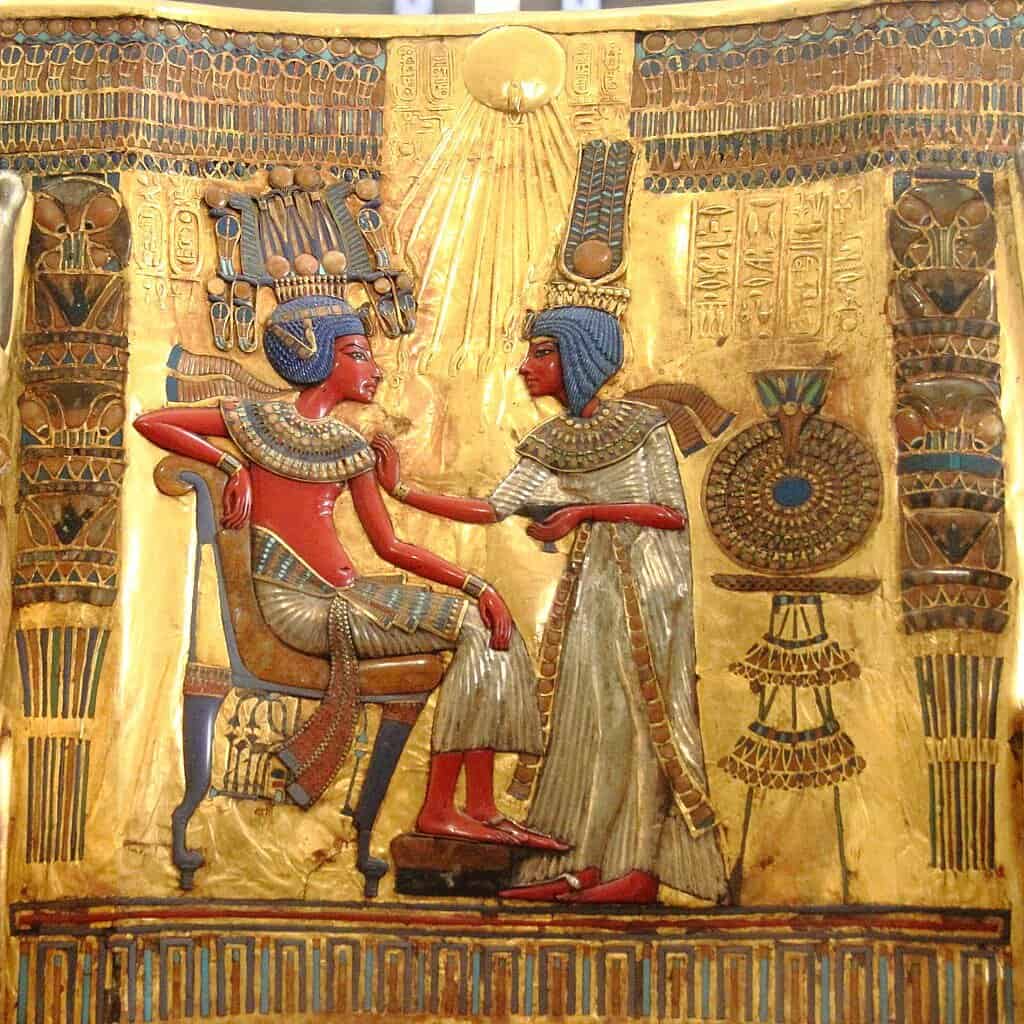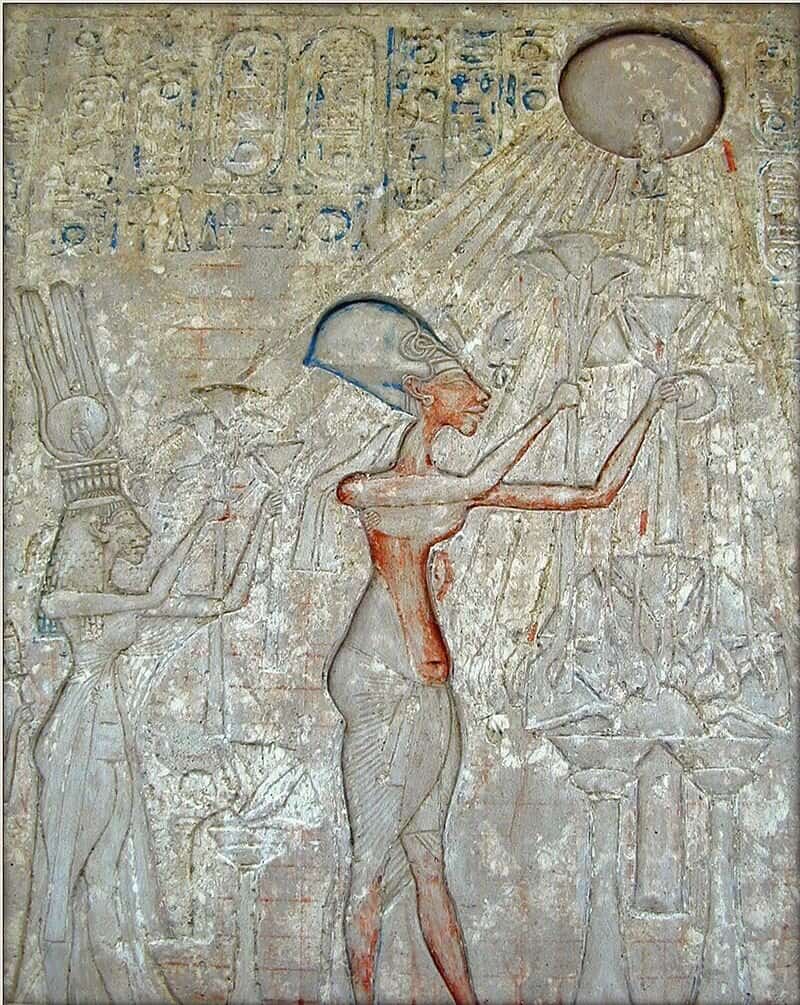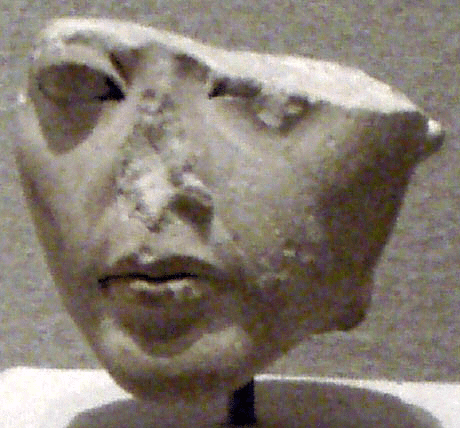A discovery of the tomb of Tutankhamun in 1922 by British Egyptologist Howard Carter made a huge impact on the history of archeology. It was considered to be one of the important discoveries of the century. Almost everyone has heard of the young king, but the tragic life of his wife Ankhesenamun that is well-documented in the ancient reliefs and paintings of the reign of her parents is still the greatest mystery for Egyptologist researchers. There are her images next to the king but after his death, it seems that she disappeared from the historical records.
Ankhesenamun was born in a very influential family in the 18th Dynasty of Egypt. She was the third daughter of reformer Pharaoh Akhenaten and his equally famous wife, beautiful Nefertiti. She became the wife of her half-brother, Tutankhamun, at the age of 13, while her husband was only 8 or 10. She is believed to have been born in Thebes but grew up in Akhetaten (presently known as Amarna), a center of the cult of the god Aton, a capital city that existed for only about 15 years. This is confirmed by the many ancient artifacts found by archaeologists.
Additionally, researcher Valérie Angenot, professor of art history and specialist in visual semiotics at the University of Quebec in Montreal believes that after the death of Nefertiti, Akhenaten married his eldest daughter, Meritaton.

Livescience writes: “Plague hit Egypt during Akhenaten’s approximately 17-year reign (1353 to 1335 B.C.). Even three of Akhenaten’s daughters died during that time, possibly from the plague, Angenot said. “I believe that because of all these deaths, he kind of tried to prepare his succession,” Angenot told Live Science. “He tried to prepare his four surviving children to be likely to rule at some point if the others died.”
So, Akhenaten married his eldest daughter, Meritaten. Then, his second daughter Ankhesenpaaten had to marry, Tut so that when Tut became king, she would become the queen. It was very common to get married within the family in ancient Egypt. It was practiced to protect the royal lineage. The pharaohs believed they were descended from the gods and marriage among close relatives was acceptable to conserve the sacred bloodline.
Read also:
- Sumerians Built Spaceport, Launched Spacecrafts And Traveled Outside Solar System 7000 Years Ago
- Metal Library Of Ecuador: Ancient Astronauts’ Time Capsule With Detailed Instructions To Mankind?
- Ancient Sumerian King Etana Traveled To Outer Space With Gods In A Spaceship
Initially, Ankhesenamun may have been married her father, becoming the queen. During their reign, the Kings or Pharaohs had to name their co-regent and in Akhenaten’s case, it was Smenkhkare. Shortly after the death of Akhenaten, Smenkhkare became the pharoh and married Ankhesenamun. Ultimately, Smenkhkare also died in 2 or 3 years, and finally, Ankhesenamun became the wife of King Tut.

Tutankhamun himself died at the age of 19, possibly from a gangrene infection that developed after a broken leg. Some scientists suggested that he might have been murdered, but the research done on his remains did not confirm it. During their reign, it is believed that Tutankhamun and Ankhesenamun had two children (both girls) who were born prematurely and died. Evidence comes from the mummified remains of two babies found in Tutankhamun’s tomb and DNA analysis confirmed that they were daughters of Tutankhamun.
Young Pharaoh’s advisor Ay instantly became the king and married Ankhesenamun. Some believe that he was her maternal grandfather. The funeral of Tutankhamun was carried out in a hurry, without following the traditions of burial of the highest rulers. From this point on, the evidence of Ankhesenamun’s life was interrupted. Even the analysis of Ay’s burial failed to shed light on this issue. The walls of the pharaoh’s tomb are decorated with images of Tey, his next wife, but there is nothing about Ankhesenamun. There is no written document on her and also no information about her tomb. She disappeared completely and without a trace.
In 2016, archaeologists who scanned King Tut’s tomb said they believed there were undiscovered chambers adjacent to burial that could contain the mummies of Queen Nefertiti or even Ankhesenamun. But a more thorough scan by National Geographic a few months later did not reveal evidence of the chambers. Ankhesenamun disappeared from the historical record sometime between 1325 and 1321 B.C.

According to some reports, after the death of Tutankhamun, Ankhesenamun tried to find protection from the enemies of the Egyptians, the Hittites. Archaeologists discovered a letter to the Hittite king Suppiluliumas I by an unknown royal woman who makes a plea to send her one of his sons and marry her. Then Suppiluliumas I sent his youngest son Zananza to marry the Queen of Egypt but was killed by the Egyptian forces. It is not known if this theory is true, but the story of Egypt’s Lost Princess is indeed mysterious.
References:
- https://www.ancient-origins.net/ancient-places-africa/tragedy-queen-ankhesenamun-sister-and-wife-tutankhamun-001555
- https://ancientegyptonline.co.uk/suppiluliuma-letter/
- https://kingtutone.com/queens/ankhesenamun/
- https://allthatsinteresting.com/ankhesenamun








